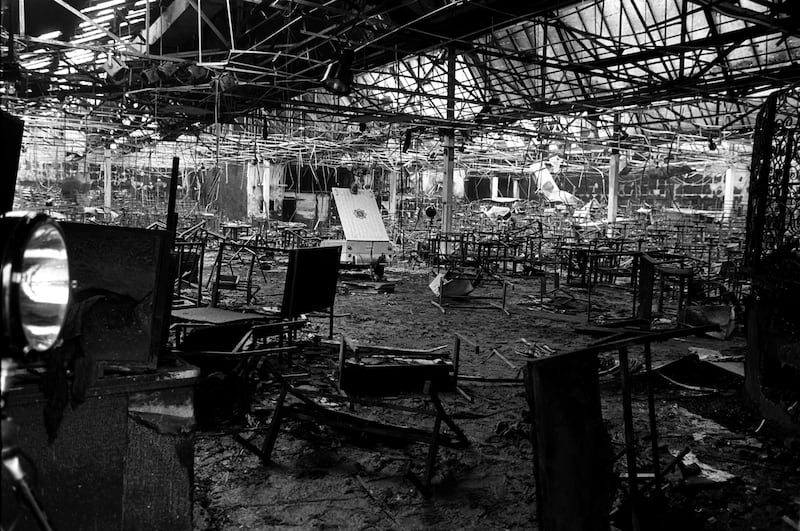During 122 days of hearings, including more than 90 of direct evidence, the Stardust inquests heard testimony that was in turn startling, sometimes confusing and often distressing.
Crucial to building a picture of how and why 48 people, aged 16-27, died as a result of an inferno in the north Dublin nightclub in the early hours of February 14th, 1981, was evidence on the almost 3,000 carpet tiles which lined the venue’s walls; the condition of its six exits; the sealing shut of toilet windows with metal plates and bars weeks before the disaster; the lack of staff fire-safety training; and the eyewitness accounts of patrons, staff, the public and emergency services of the horrors that unfolded.
Among the most moving testimonies came at the inquests’ opening, in April 2023, when families and friends presented “pen portraits” of the victims. These were the first such portraits to be presented in this jurisdiction, their function being to bring the lives of the deceased to the heart of proceedings.
The jury heard vivid and touching descriptions of bright, happy lives lost and the shattering impact of their deaths on families and their communities. The emotion with which they were delivered testified to the ongoing devastation wrought by the Stardust. Repeatedly families expressed hope these inquests would finally answer the questions: how and why did the 48 die?
READ MORE
Evidence was organised into four modules – comprising former staff and management involved in the construction and running of the Stardust; patrons and members of the public who saw the fire; emergency services; and experts in fire and pathology.
In June 2023 former floor-coverings salesman Declan Conway outlined how he had sourced carpet tiles to line the Stardust’s walls in 1977-1978, along with a fire certificate requested by manager Eamon Butterly. Conway insisted the manufacturer knew the tiles would be used as wallcovering, rejecting the company’s 1981 assertion it would never have recommended them for walls. The fire certificate did not meet the requirements of Dublin corporation, now Dublin City Council (DCC), the inquests heard.
Brenda Campbell, counsel for families of 10 of the dead, read 1981 evidence indicating the manufacturer had been phasing out the carpet tiles and they had been reduced to clear. “Was the priority to get a cheap, job-end lot?” she asked Conway. “Excuse me. I find that very offensive,” said the witness.
Butterly in September insisted it had been the corporation’s responsibility to veto the use of the carpet tiles if there had been a problem with them. “I expected that if Dublin Corporation... were happy to allow us to put them up on a wall, they were happy and I was happy then,” he said.
DCC’s counsel, Patricia Dillon, hit back in closing statements. The 1978 planning permission had stipulated the walls be plaster-skimmed. There had been no request to change it. “A local authority, a planning authority, is not a nurse maid for people who make planning applications,” she said.
The condition of exit doors loomed large. There were descriptions of doors being “mock-locked” – with chains draped over panic bars to make them appear locked. In June, for the first time, the venue’s head of security, Phelim Kinahan, told the inquests it was “policy” to keep all six exits locked until as late as 12.40am to “stop people from coming in” without paying.
[ A Stardust survivor recounts the night her two sisters died in the blazeOpens in new window ]
The following month, the former deputy head doorman, Leo Doyle, made a dramatic reversal. After four days in the witness box saying the doors were unlocked, he apologised and said he now believed he “made a right boo-boo... the doors were locked. They must have been.”
Butterly insisted the doors were unlocked at the time of the fire. “When I went outside afterwards, all those doors were open,” he told Des Fahy, counsel for families of nine of the dead. Fahy described as a “catastrophe” that so many died metres away from “locked” exits.
“Well, it was a catastrophe but it wasn’t because the doors were locked... The doors weren’t locked,” repeated Butterly.
As to how the fire started, arson was ruled out in 2009 when the Houses of the Oireachtas removed the finding, by the chairman of the 1981 tribunal of inquiry Mr Justice Ronan Keane, that arson was the “probable” cause, from the public record.
[ Timeline: The Stardust disaster - a decades-long campaign for truthOpens in new window ]
Forensic fire investigator Dr Will Hutchinson initially told the inquests “possible” causes of the fire were deliberate or accidental ignition in the West alcove, or in a hot press in the bar on the other side of the wall between the bar and the West alcove. It was on a seat in the West alcove that fire was first seen inside the venue at about 1.40am.
Under examination by Sean Guerin SC for the families, Dr Hutchinson appeared to revise his view. There was “no evidence” of arson and “a detailed evidential basis” to indicate the fire started in the hot press, he said. It was the only cause he identified as “likely”.
Testimony from patrons and emergency services over several weeks in late 2023 were among the most distressing. Evidence from Damien Fallon, aged 16 at the time, was read into the record in November. He described getting out and then witnessing a girl “making for the door”.
“It appeared she was running around in circles. Everyone was shouting to tell her where the door was. She had no dress. It was burnt off. Everyone was shouting to her. She made for the door. She was coming to the door when a ball of flames came from the ceiling and she was engulfed by the flames.”

Noel Keegan, a 30-year-old member of Dublin Fire Brigade (DFB) attached to Tara Street station on the night, in December described finding bodies “burnt to a cinder” during the search of the smouldering ballroom. Others recalled bodies “fused together” and so badly burnt they could not be recognised as male or female.
“Make no mistake and remember, the Stardust changed every person it touched,” he said.
- Join us for The Irish Times Inside Politics podcast live in Belfast on April 10th
- Sign up for push alerts and have the best news, analysis and comment delivered directly to your phone
- Find The Irish Times on WhatsApp and stay up to date













